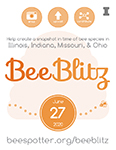Archived info - previous project description
Construction of a new 54-acre, 12.1 megawatt (MWdc) Solar Farm has been approved by the University of Illinois Board of Trustees as the sole member of Prairieland Energy, Inc. Referred to as "Solar Farm 2.0," the new utility-scale array will be located north of Curtis Road, between First Street and Dunlap Avenue in Savoy. Solar Farm 2.0 will produce approximately 20,000 megawatt-hours per year (MWh/year), nearly tripling the university’s existing on-site renewable energy generation. Completion of this project will then grant the University of Illinois with the title of being the third-largest user of renewable power generated on-site for all higher education facilities in the entire country.
Project Inception
In April 2017, the Energy Sustainability Working Advisory Team (SWATeam) recommended that to increase our campus’ generation of solar power, either an extension should be built onto the original Solar Farm or additional solar panels be installed across campus rooftops. From there, the idea of Solar Farm 2.0 was born. In November of that same year, the Sustainability Council approved the concept of this new solar farm, and a site selection was completed during spring 2018.
In the summer of 2018, after discussions with our neighbors in Savoy, the Chancellor’s Capital Review Committee approved the location, and a request for proposals was initiated. Different vendors from across the nation submitted proposals and various designs for this new solar farm, with nineteen submissions in total. By May of 2019, Sol Systems of Washington, D.C. was chosen to complete the project. A twenty-year contract was negotiated, and the overall project is on track to be completed by the end of 2020.
Project Overview
Sol Systems will be responsible for the design, construction, and maintenance for Solar Farm 2.0, and like Solar Farm 1.0, the Urbana campus will use all the generated power. The $20.1M contract is anticipated to save the university $300,000 in the farm’s first year compared to electricity purchased from the wholesale MISO market. Prairieland Energy will buy the solar energy at a fixed rate of $45.99 per MWh, while the University of Illinois will receive the associated renewable energy certificates (RECs) and the right to claim the use of clean energy.
Pollinator Habitat
Other innovative features of Solar Farm 2.0 include the incorporation of a pollinator habitat located beneath the panels. Indigenous plants will be planted throughout the farm to welcome local and migratory birds and insects. Specifically targeted towards butterflies and bees, Solar Farm 2.0 will be a welcoming environment for wildlife, as well as being a demonstration site for meeting the requirements of the Pollinator Friendly Solar Site Act. A landscaped buffer will also be included in the final design of Solar Farm 2.0, creating visual screening of the solar panels along the south edge of the farm bordering Savoy.


